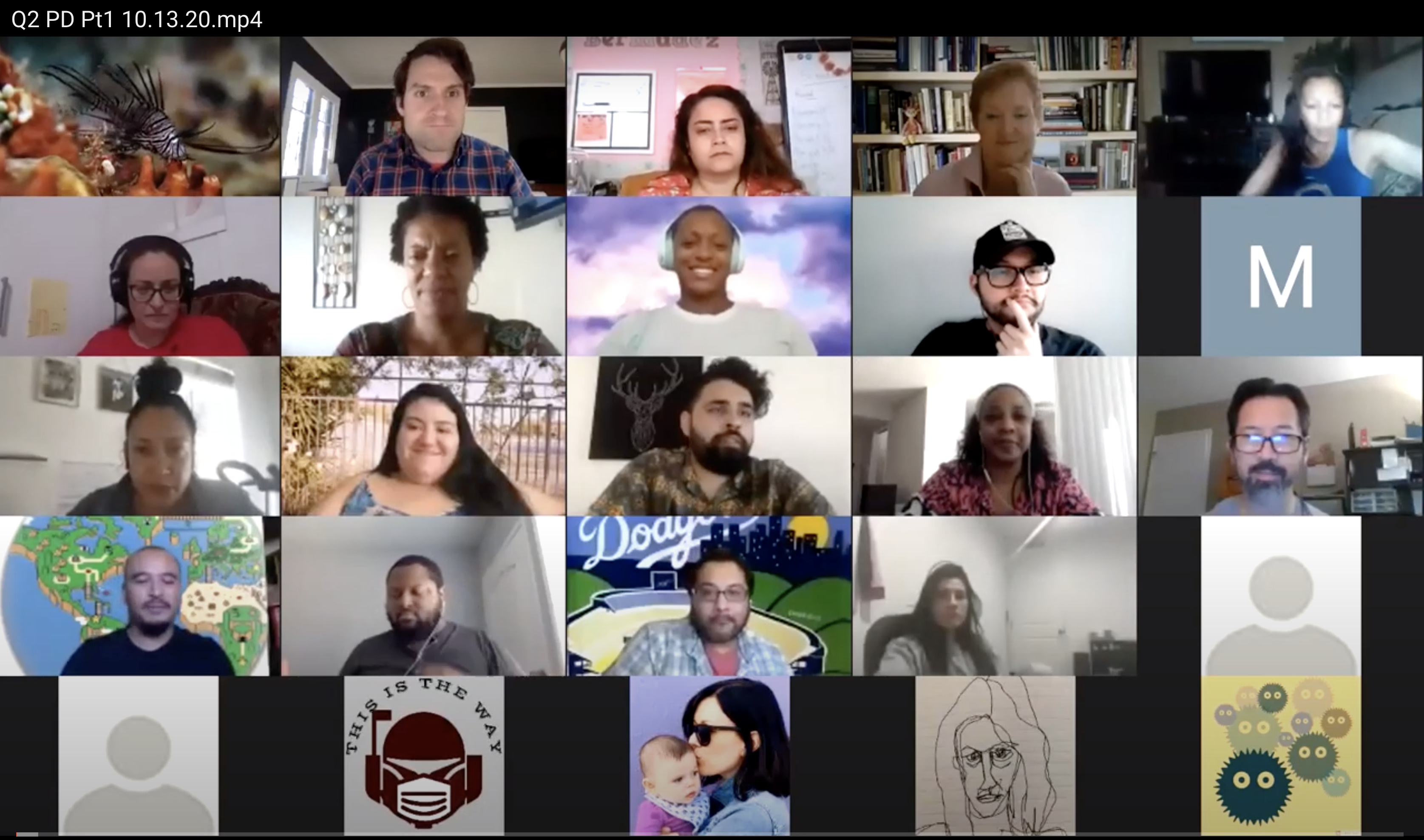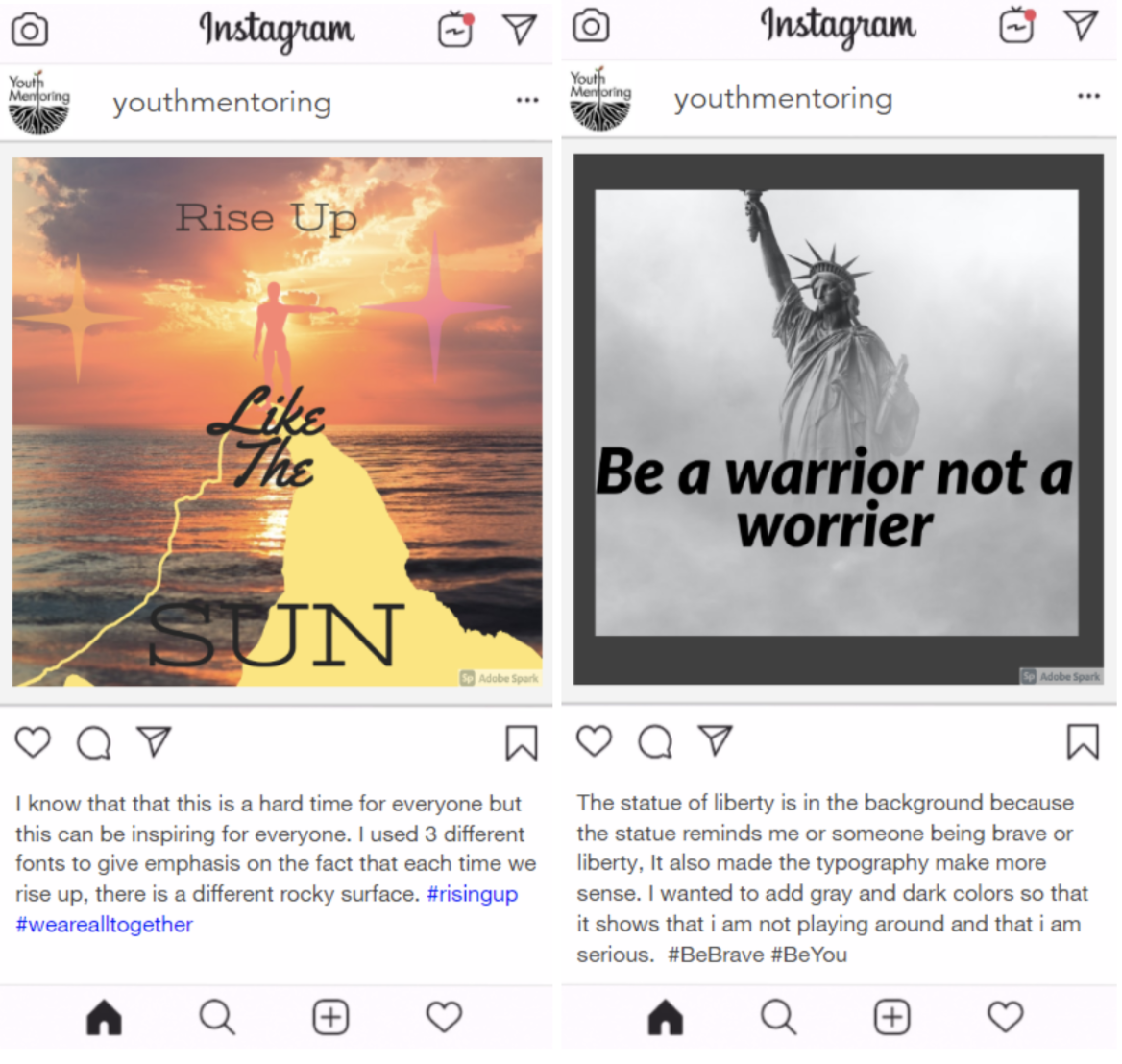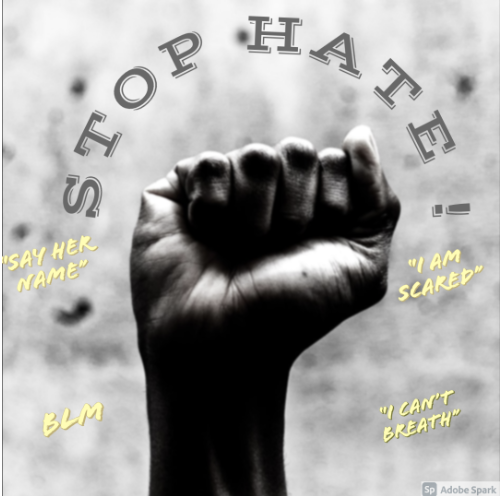After spending some time this summer restructuring and tightening up our approach to digital media arts and full arts integration, we have a lot of wins to share!
The kick-off to the second year of the Media ArtsMatter program looked a little different than expected, with schools closed and all classes taking place online due to COVID-19. However, we were able to transition all of our programming to the virtual space thanks to Zoom and the virtual nature of Media Arts.

After two weeks of summer training, 32 teachers began the year with a unit on Graphic Design. This unit – the first of four this year – focused on the topics of color, emphasis, and typography. Students paired this arts learning with content from other academic subject areas to create work that explored the theme of Change. To bring this learning to life, students were assigned sample clients and were asked to create an Instagram campaign that communicated a change the client was undertaking.



Students busied themselves with all things graphic design during the first months of school, using Adobe Spark to create Instagram imagery for their clients. Throughout this time, students were able to seek feedback from their peers, their teacher, and the classroom’s Teaching Artist, all of whom were able to interact with the students’ art through screen sharing and virtual collaboration boards.

Tia's tips and tricks For this quarter our main resource was a Black Lives Matter Sutori that I created this summer and updated throughout the quarter. Our students were very engaged in the material. They offered honest and reflective opinions about how they felt and the content. They were tasked with creating Black Lives Matter and/or Social Justice graphics. My co-teachers and I were so floored with their artwork. They communicated their ideas and opinions clearly with artistic techniques. They wrote thoughtful statements about their work. My co-teachers and I intentionally created an emotionally safe space where everyone was valued as people and artists. We gave each other grace and encouragement and compassionate critique. I’m grateful to be working with my co-teachers and students this year.



Ilene's tips and tricks Maybe I am biased but using the one pagers we have worked so tirelessly on is an efficient way to execute the goals in this unit of the curriculum. With a heavy focus on vocabulary, they each offer a sort of 'cheat sheet' for students (and educators!) as they prepare themselves for mid project and final presentations.


The classes that showed the most proficiency with the Graphic Arts vocabulary were the classes where the focus of each class was simple. We used a simple, predictable format and always showed the students a 'plan' for the day so they knew what would be expected of them. In the true essence of 'backwards' planning we started with the project brief and rubric in lesson 1 so that our community objective was clear.


Many educators think that integrating digital arts means changing how they've always done things. While this might be partially true, successful arts integration requires the intentionality, strategy and time everyday classroom teachers dedicate to each and every lesson they execute without a Teaching Artist.

